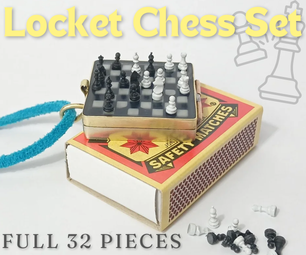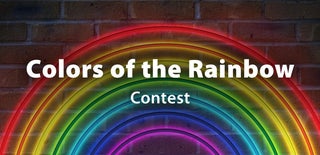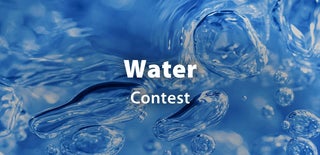Introduction: How to Put Edited Pictures Back Into Your Digital Camera (converting Images to Dcf Compatible Jpeg)
So It's Christmas!
And you bought your girlfriend the perfect gift ... as perfect as a third world's month internship salary can buy :
A decent Digital Camera!
The Story (skipable):
As a graduating electrical engineer specializing on computer engineering you've "modded" a few gifts before... You remember hacking that MP3 player's firmware on her birthday, so that it would spell her name instead of it's logo... Ahh The Joy of identifying the image/correcting the checksums... all that HEX...
You thing that this one should be really easy! I'll just put one of my sketches as an opening screen for the camera...heck it even HAS this feature so there's no risk of "briking" (ie. turning into an useless BRICK) this one...The only thing you need to do is get your sketch drawing into the device
Problem:
Most digital camera makers obey a design Standard when it comes to file format ( the Digital Still Camera Image File Format Standard (Exif) ) known as dcf. it's mostly JPEG with thumbnails and EXIF data, all wrapped together into a single file disguised as one friendly .JPEG extension... The great thing about it is that it allows people with DCF compatible cameras to view/print out their pictures on DCF compatible equipments without the need for a computer...
The 'not so great thing' is that this Standard does NOT say anything about the camera being able to read "JFIF" JPEG ...the image format we all know (and export from image editors) as JPEG...
This means that if your camera CAN read JFIF (the normal JPEGs) you're in luck and ou don't need this instructable (don't worry you can still hang around and see the pictures :P )
In my case, the Digimax A503 from samsung DOES NOT READ JFIF...
To find out if your camera can read normal JPEG simply copy an image that wasn't taken from a Digital Camera (or edit and save one that was) and save it on your camera's memory or memory card in dcim xxx.JPG (if it all sounds too hard... just take a dummy picture with your camera, browse your camera , find its name , rename the normal JPEG (the edited picture) to the same name of the picture you took and overwrite it on the camera)
This instructable is not intended to explain what's the DCF standard (search "exif.org" for that) , I'm keeping this as simple as possible as it is intended to anyone that can google it...
And you bought your girlfriend the perfect gift ... as perfect as a third world's month internship salary can buy :
A decent Digital Camera!
The Story (skipable):
As a graduating electrical engineer specializing on computer engineering you've "modded" a few gifts before... You remember hacking that MP3 player's firmware on her birthday, so that it would spell her name instead of it's logo... Ahh The Joy of identifying the image/correcting the checksums... all that HEX...
You thing that this one should be really easy! I'll just put one of my sketches as an opening screen for the camera...heck it even HAS this feature so there's no risk of "briking" (ie. turning into an useless BRICK) this one...The only thing you need to do is get your sketch drawing into the device
Problem:
Most digital camera makers obey a design Standard when it comes to file format ( the Digital Still Camera Image File Format Standard (Exif) ) known as dcf. it's mostly JPEG with thumbnails and EXIF data, all wrapped together into a single file disguised as one friendly .JPEG extension... The great thing about it is that it allows people with DCF compatible cameras to view/print out their pictures on DCF compatible equipments without the need for a computer...
The 'not so great thing' is that this Standard does NOT say anything about the camera being able to read "JFIF" JPEG ...the image format we all know (and export from image editors) as JPEG...
This means that if your camera CAN read JFIF (the normal JPEGs) you're in luck and ou don't need this instructable (don't worry you can still hang around and see the pictures :P )
In my case, the Digimax A503 from samsung DOES NOT READ JFIF...
To find out if your camera can read normal JPEG simply copy an image that wasn't taken from a Digital Camera (or edit and save one that was) and save it on your camera's memory or memory card in dcim xxx
This instructable is not intended to explain what's the DCF standard (search "exif.org" for that) , I'm keeping this as simple as possible as it is intended to anyone that can google it...
Step 1: Converting Your Image
In spite of the lack of resources concearning this subject (I couldn't find much!) There are several ways of doing this ,if anyone finds a better free conversion tool or if I manage to finish coding my own, please let me know so we can edit this later...
The Simple Alternatives (for now)
+Sony's PSP Image Converter Plus:
Guess what? the PSP is DFC compliant! meaning that you can use this converter (NOT FREE) to generate Jpegs compatible with your dcf reading camera!
+ Panasonic's Image Creator (FREE!!!):
A simple program made by panasonic in order to convert Slideshows and Other Images into dfc compatiple Jpeg format
+ Taking a picture of a picture (FREE)
But you didn't need an Instructable for that...
The Simple Alternatives (for now)
+Sony's PSP Image Converter Plus:
Guess what? the PSP is DFC compliant! meaning that you can use this converter (NOT FREE) to generate Jpegs compatible with your dcf reading camera!
+ Panasonic's Image Creator (FREE!!!):
A simple program made by panasonic in order to convert Slideshows and Other Images into dfc compatiple Jpeg format
+ Taking a picture of a picture (FREE)
But you didn't need an Instructable for that...
Step 2: Using Image Creator
Image Creator 1.5 is a freeware tool that was created by panasonic in order to convert Images into dcf compatible format for one of it's projectors...
The program itself is a no-brainer...
+You can adjust the final image's Quality in the settings/preferences Menu
+You can add Images for conversion using the IMAGES button
+You can select a destination for the converted images by clicking on the FOLDER ICON, select your HD...(this will create a X:\DCIM\XXXPJPCN\ folder)
+EXECUTE the conversion with the Convert & Save button
The program itself is a no-brainer...
+You can adjust the final image's Quality in the settings/preferences Menu
+You can add Images for conversion using the IMAGES button
+You can select a destination for the converted images by clicking on the FOLDER ICON, select your HD...(this will create a X:\DCIM\XXXPJPCN\ folder)
+EXECUTE the conversion with the Convert & Save button
Step 3: Renaming to Match Your Camera
Now you'll need to rename the file that was generated by Image Creator to your own camera's Standard...just mimic your previously taken pictures:
Example: the A503 saves files like this S5030015.JPG (In bold is the camera identifier, the rest is just an index)
Now all I needed to do was rename the converted picture from JPCN0001.JPG to S5030001.JPG (note that you should choose an index number that DOESN'T match any of the pictures currently on your memory card or camera's internal memory!)
Example: the A503 saves files like this S5030015.JPG (In bold is the camera identifier, the rest is just an index)
Now all I needed to do was rename the converted picture from JPCN0001.JPG to S5030001.JPG (note that you should choose an index number that DOESN'T match any of the pictures currently on your memory card or camera's internal memory!)
Step 4: Send It Back to the Camera...
Now you just need to copy the image you renamed during last step to your camera ,under the correct path of course (ex for samsung: X:\DCIM\100SSCAM )
Well...This was my first published instructable... It's not one of my hardware projects as I expected it to be...I'm tired ... it's late and I'm not a native english speaker ...so... don't crucify me if I made too many mistakes alright? (it's christmas! save it for easter time...)
Well...This was my first published instructable... It's not one of my hardware projects as I expected it to be...I'm tired ... it's late and I'm not a native english speaker ...so... don't crucify me if I made too many mistakes alright? (it's christmas! save it for easter time...)











